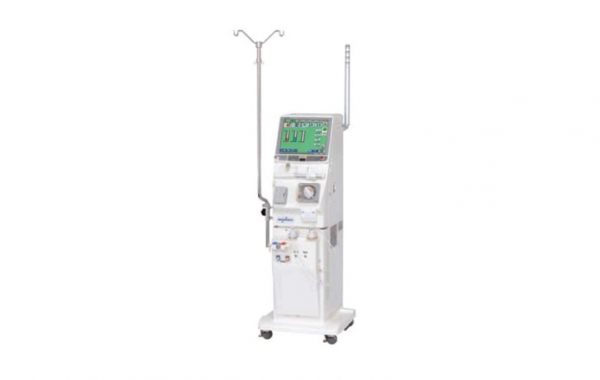Disposable vapes have gained immense popularity due to their convenience, portability, and variety of flavors. But the affordability of these products has raised some concerns regarding their safety and long-term health effects. When choosing inexpensive vape options, consumers often overlook the quality of the ingredients, manufacturing processes, and potential health risks associated with their use. This article delves into the health risks of cheap disposable vapes, explains what makes them dangerous, and offers tips for making informed choices.
What Makes a Disposable Vape “Cheap”?
Manufacturing and Quality Control
Cheap disposable vapes are typically produced at a lower cost, which often means corners are cut in the manufacturing process. This can include using low-quality materials, inadequate quality control, and a lack of adherence to safety standards. In contrast to reputable brands, these products may contain poorly assembled components or substandard ingredients that can pose significant health risks.
Questionable Ingredients
Affordable disposable vapes may contain harmful chemicals, heavy metals, or other contaminants due to the use of low-quality or improperly sourced materials. For instance, the vape juice in cheaper devices might include synthetic additives, flavor enhancers, and even banned substances to replicate popular flavors at a fraction of the cost. These additives can cause serious health issues, especially when inhaled over time.
Lack of Regulation and Testing
Many cheap disposable vapes manufacturers operate in regions with minimal regulatory oversight, which allows them to bypass essential safety tests. This lack of regulation means that the products are not tested for purity, potency, or harmful byproducts, increasing the likelihood that they contain dangerous ingredients.
Potential Health Risks of Cheap Disposable Vapes
1. Exposure to Harmful Chemicals
Cheap disposable vapes often use low-grade e-liquids containing chemicals that can be dangerous when inhaled. These include:
- Diacetyl: A chemical linked to “popcorn lung” (bronchiolitis obliterans), a severe and irreversible lung condition.
- Acetoin and Acetyl Propionyl: Flavoring agents that can cause respiratory irritation.
- Benzene: A known carcinogen that can damage the lungs over time.
- Synthetic Nicotine: Some cheap vapes may use synthetic nicotine, which can be more potent and addictive, leading to increased health risks.
When heated, these chemicals can break down into even more harmful byproducts, such as formaldehyde, which has been associated with cancer and other health issues.
2. Presence of Heavy Metals
Due to the use of inferior materials, the heating coils in cheap disposable vapes can leach heavy metals like lead, cadmium, and nickel into the vapor. Inhalation of these metals can result in:
- Lead Poisoning: Affecting the nervous system and causing developmental delays in children.
- Nickel Allergies: Leading to skin rashes, respiratory issues, and, in severe cases, lung damage.
- Cadmium Exposure: Linked to kidney disease and lung cancer.
The prolonged use of cheap disposables with heavy metals can significantly elevate the risk of chronic health problems, especially for regular users.
3. Inaccurate Nicotine Levels
Inexpensive disposable vapes may not provide accurate information regarding their nicotine content. Mislabeling can result in users inhaling significantly higher amounts of nicotine than intended, leading to:
- Nicotine Poisoning: Symptoms include nausea, vomiting, dizziness, and in extreme cases, seizures.
- Increased Dependency: Higher nicotine levels can exacerbate addiction, making it more difficult to quit or reduce usage.
- Cardiovascular Risks: Elevated nicotine intake is associated with increased heart rate, high blood pressure, and a greater risk of heart disease.
4. Battery Malfunctions and Explosions
The batteries in low-cost disposable vapes are often produced without adequate safety standards, making them prone to malfunctions. Potential issues include:
- Overheating: Cheap batteries can overheat, especially if the vape is used extensively or left charging for too long.
- Explosions: There have been reports of low-quality vape devices exploding, causing burns, facial injuries, or fires.
- Chemical Leaks: Faulty batteries can leak chemicals, posing both inhalation risks and potential skin contact hazards.
5. Adverse Respiratory Effects
Cheap disposable vapes are often produced with insufficient ventilation or inferior heating mechanisms, which can lead to improper vaporization of the e-liquid. This can create:
- Lung Irritation: Causing coughing, throat discomfort, and increased susceptibility to respiratory infections.
- Asthma-like Symptoms: Some users may develop symptoms such as wheezing, chest tightness, and difficulty breathing.
- Chronic Obstructive Pulmonary Disease (COPD): Long-term use of unregulated vapes has been linked to an increased risk of COPD, a chronic lung disease that obstructs airflow.
6. Unknown Long-Term Effects
One of the most significant concerns surrounding cheap disposable vapes is the unknown long-term health impact. Because these products often use untested or novel chemicals, it is impossible to predict the full extent of their health effects over time. Regular use may lead to unforeseen complications and chronic health issues that are not immediately apparent.
Tips for Choosing Safer Disposable Vapes
1. Research the Brand
Choose reputable brands that are transparent about their manufacturing processes and ingredient sourcing. Trusted brands often publish their product lab tests, which provide detailed information about the purity and safety of their vapes.
2. Check for Third-Party Testing
Ensure that the disposable vape you choose has undergone third-party testing. This testing should verify the absence of harmful chemicals, heavy metals, and other contaminants. Look for products with Certificates of Analysis (COAs) to confirm they meet safety standards.
3. Review Customer Feedback
Customer reviews can provide insights into the safety and quality of a disposable vape. Pay attention to any reports of health issues, battery problems, or inconsistent performance, as these could indicate underlying safety concerns.
4. Avoid Extremely Low-Cost Options
While it may be tempting to opt for the cheapest option available, extremely low-priced vapes are often a red flag for poor quality. Investing a little more in a safer, higher-quality product can prevent serious health risks down the line.
5. Check for Proper Labeling
Ensure that the disposable vape has clear labeling indicating the ingredients, nicotine content, and manufacturer’s details. Lack of proper labeling can signal a product that does not meet regulatory standards.
6. Be Cautious with Flavored Options
Many cheap vapes rely on artificial flavorings, which can contain harmful chemicals. If possible, choose flavorless options or products that use natural, food-grade flavorings.
The Bottom Line
Cheap disposable or rechargeable vapes may seem like a convenient and affordable option, but they can come with significant health risks. From exposure to harmful chemicals and heavy metals to potential battery malfunctions, these low-cost alternatives are often produced with minimal safety oversight. Users looking to vape should prioritize safety by choosing reputable brands, verifying third-party testing, and avoiding products that are suspiciously inexpensive. While cost is an important factor, your health and well-being should always come first. By making informed decisions, you can enjoy vaping with greater peace of mind and reduce the risk of long-term health complications.



